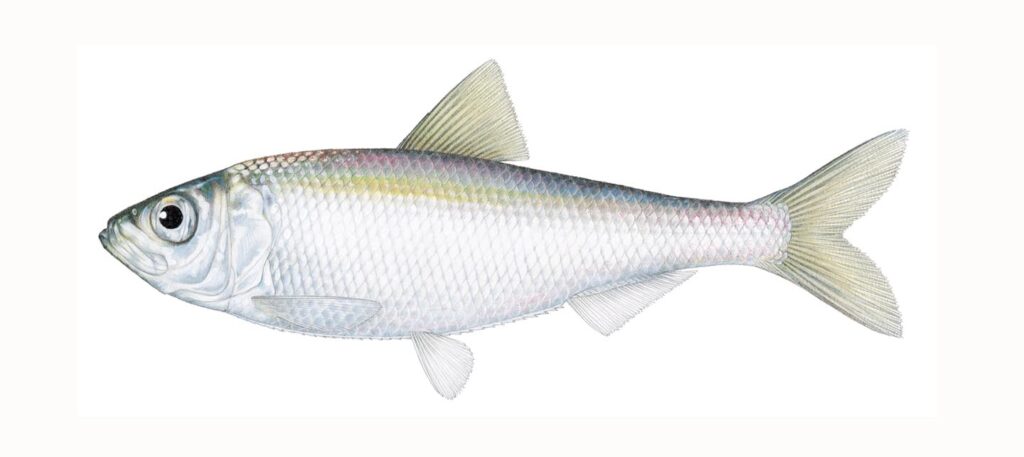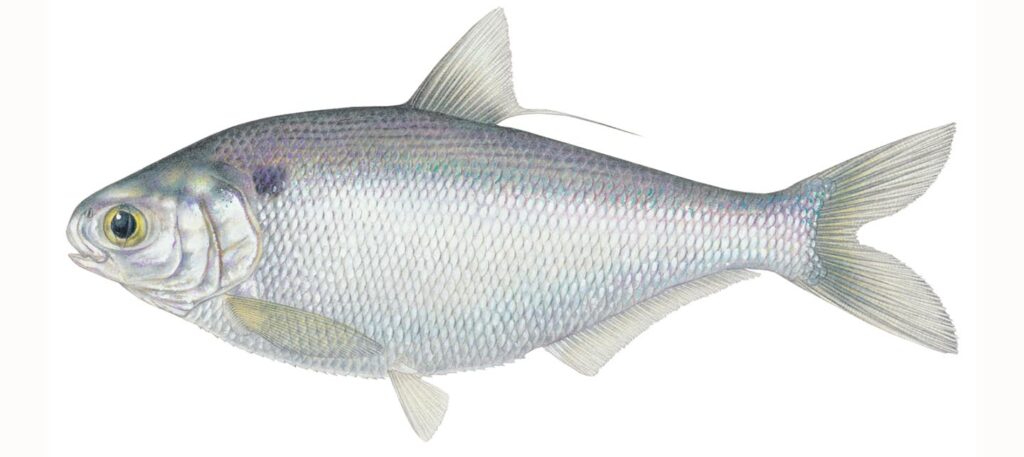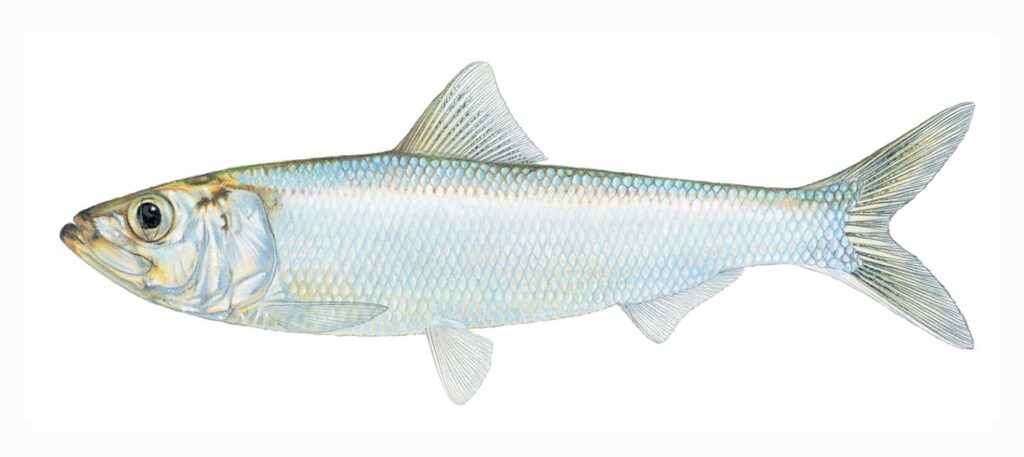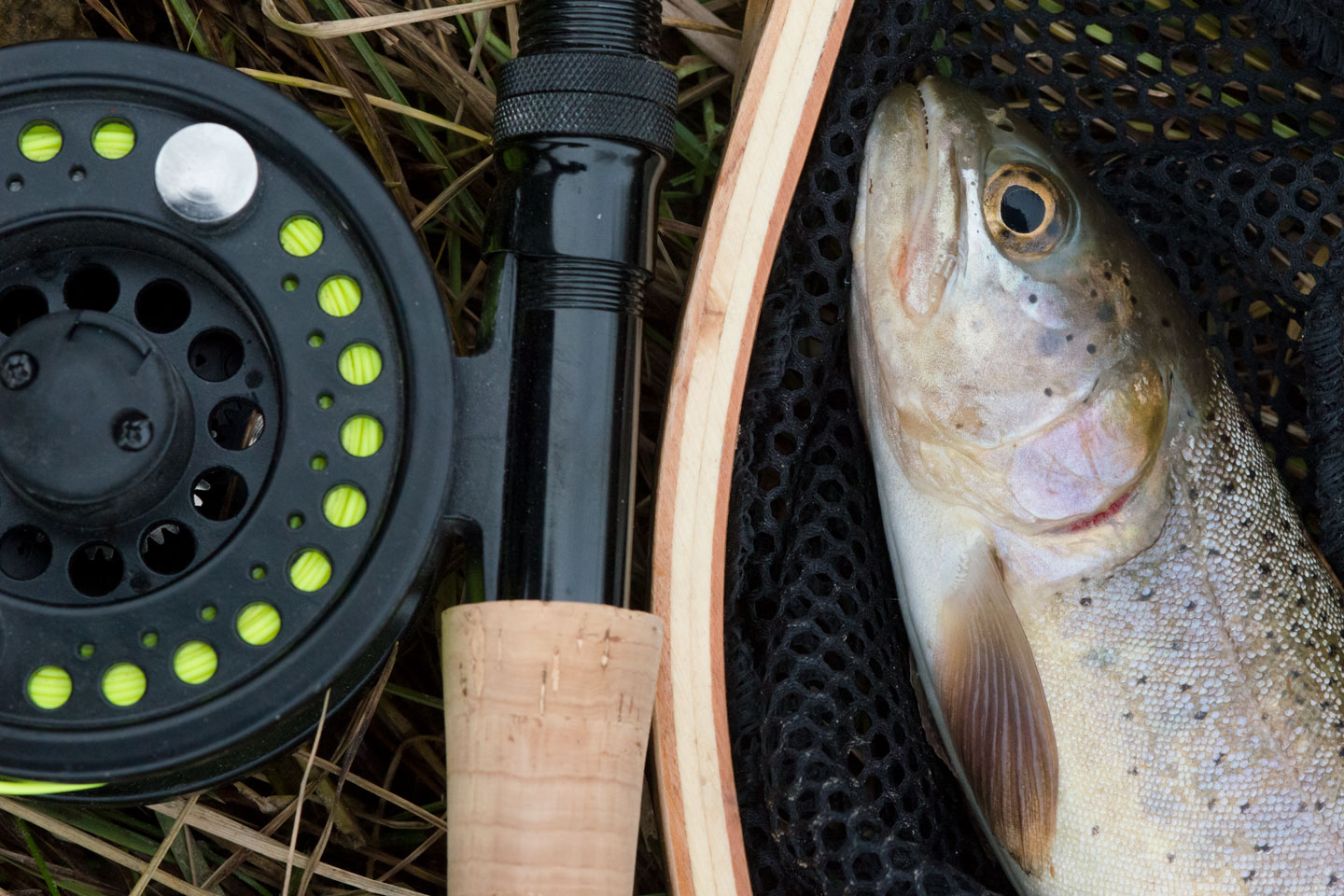Herring ID
Alosa pseudoharengus
Description: Silvery, streamlined fish with a projecting lower jaw, triangular-shaped axillary process at base of pelvic fin and saw-toothed keel. The dorsal fin is far forward of anal fin with last dorsal fin ray not elongated to a slender filament. Faint black spot behind upper end of opercle. Considered a filter feeder and grazer – consuming small plants (primarily algae) and invertebrates (primarily zooplankton and small insects). They have also been found to consume eggs and fry of various fish species which can reduce those species’ abilities to maintain self-replenishing populations. They are not native to Nebraska and have been stocked to provide additional prey for open-water predators. Can produce large populations that occasionally experience extensive die-offs.
Family: Herring
Type: Baitfish
Range: Stocked as prey in selected sandpits and reservoirs.

Dorosoma cepedianum
Also known as: shad, often mistakenly called skipjack
Description: A silvery, deep-bodied fish with a black spot behind upper end of opercle, a triangular-shaped, axillary process at base of pelvic fin, and a sharp, saw-like ridge on the belly. Dorsal fin is far forward of anal fin with last dorsal fin ray elongated to slender filament. They can be the primary food source for large game fish in large reservoirs and some sandpits. Considered a filter feeder and grazer, consuming small plants (primarily algae) and animals (primarily zooplankton and small insects), thus competing directly with many sport fish species (especially their early life stages). They are very efficient filter feeders and can decimate zooplankton populations that are important in controlling nuisance algae species.
Family: Herring
Type: Baitfish
Range: Statewide

Alosa chrysochloris
Also known as: herring
Description: A silvery, streamlined fish with projecting, lower jaw and teeth on jaw and tongue; triangular-shaped axillary process at base of pelvic fin; no black spot behind upper opercle; no elongated dorsal fin ray; dorsal fin far forward of anal fin; and has a saw-tooth edge on belly keel. Very active predator, moving about in schools and primarily feeding on small fish at or near the surface. When caught on light tackle or flyrod, it will leap out of the water. Intolerant of chronic high turbidity (muddy water).
Family: Herring
Type: Sport Fish
Range: Missouri River

References
The Fishes of Nebraska by Hrabik, et. al (2015)
The Fish Book from NEBRASKAland Magazine (1987)Related Content
Discover other fish species and resources to angling in Nebraska.



